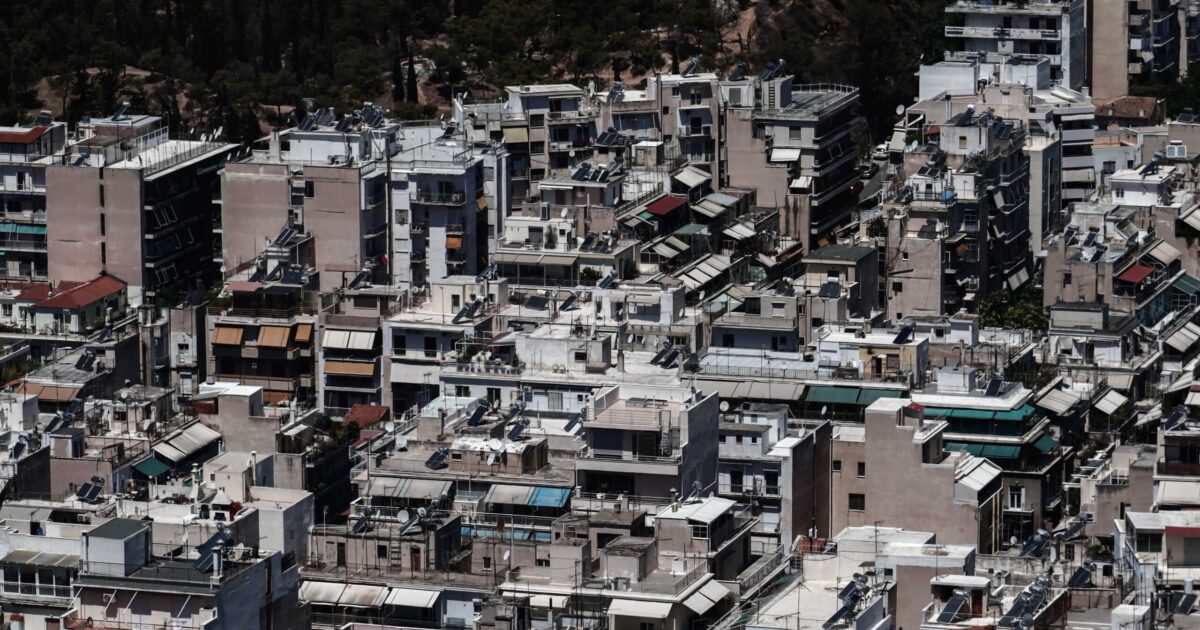The possession property It remains deeply rooted in Greek society and has been a symbol of security and social recognition over time. According to the conclusions of the survey, conducted on behalf of the Athens-Attica Association and presented at the Eugenide Foundation, in the context of a conference on real estate developments, more than half owners (56%) have a single property, which reflects the basic pursuit of the average Greek family for a privately owned roof.
At the same time, one in four (23%) holds two properties, while a remarkable 21% say they possess three or more real estate, capturing a side of Greek reality where multiple property remains a privilege of a major minority. This composition of real estate, coupled with the age of buildings and their distribution by income and geographical category, reveals not only the trends in the Greek real estate market, but also the inequalities that run through it.
According to survey data, more than half Greeks (53%) say they have a main house, while a significant 20% possessed their cottage or home. The percentage of those who say they hold an investment property (8%) or some other type of property (10%).
The image varies significantly when we look at the data based on the area of residence. In Attica, 51% of residents have a main housing, 23% cottage or father, while 9% declare investment property and another 9% other type of ownership. In Thessaloniki, the rates are slightly lower in terms of the main residence (43%), but steadily in cottages/paternal (23%). It is noteworthy that Thessaloniki has the highest percentage in the category “Other Property” (13%). Finally, the rest of Greece records the highest proportion of ownership of the main residence (56%), with a lower presence of cottages or paternal houses (18%).
Even more intense are the differences when the analysis is based on the annual income of the household. In the lower incomes (up to € 9,999), only 42% are the main housing, with the percentage increasing progressively reaching 68% for households with incomes of more than 30,000 euros.
Similar is the trend in the category of cottage or paternal residence, where the percentage rises from 16% to economically weaker 36% for affluent households. Even more emphatic are the data on investment real estate, which almost does not exist (2%) in the poorer strata, but reach 18% in higher income households. Correspondingly, the “other types of property” reach 17% in the upper income category, as opposed to just 3% on low incomes.
These findings eloquently sketch the strong relationship that Greek society maintains with the possession of real estate, as well as the intense differentiation of financial capacity. The main house is a stable pillar for the majority, but access to cottages, paternal, investment or other types of real estate seems to remain a privilege of the highest income. At the same time, geographical analysis shows that the property follows the particularities of each region, with the rest of Greece recording the highest rates of ownership.
When were the houses held today by the Greeks
The age of real estate available by Greeks offers significant indications of the course of building activity in the country, but also for the structure of ownership. According to Focus Bari data, most of the property today owned by Greek owners were built between 1970 and 2009, while the participation of the most modern buildings (after 2010) remains extremely limited.
Specifically, 28% of the owners have a property built in 1970-1979, making this decade the most “productive” in terms of real estate currently owned by natural persons. Following the 2000-2009, with 23% of homes being part of this category. Also important is the presence of properties built in the 1980s (22%) and 1990 (17%).
Older properties, that is, those erected before 1950, make up 10% of total ownership. The 1950-1969 period covers 16%, revealing that almost a quarter of the houses currently available by Greeks is over 50 years old.
On the contrary, the latest building production is significant: only 6% of houses have been built between 2010 and 2019, while a 2% marginal concerns buildings built from 2020 to 2025. This reduction demonstrates the shrinkage of building activity in Greece in recent years, which has been attributed to both economic and economic and increased economic activity.
The overall picture shows that the Greek Restate is based primarily on real estate for several decades, while the newly built a clear minority. This raises questions about the energy efficiency of housing, renovation needs, as well as the general housing strategy in the coming years.
